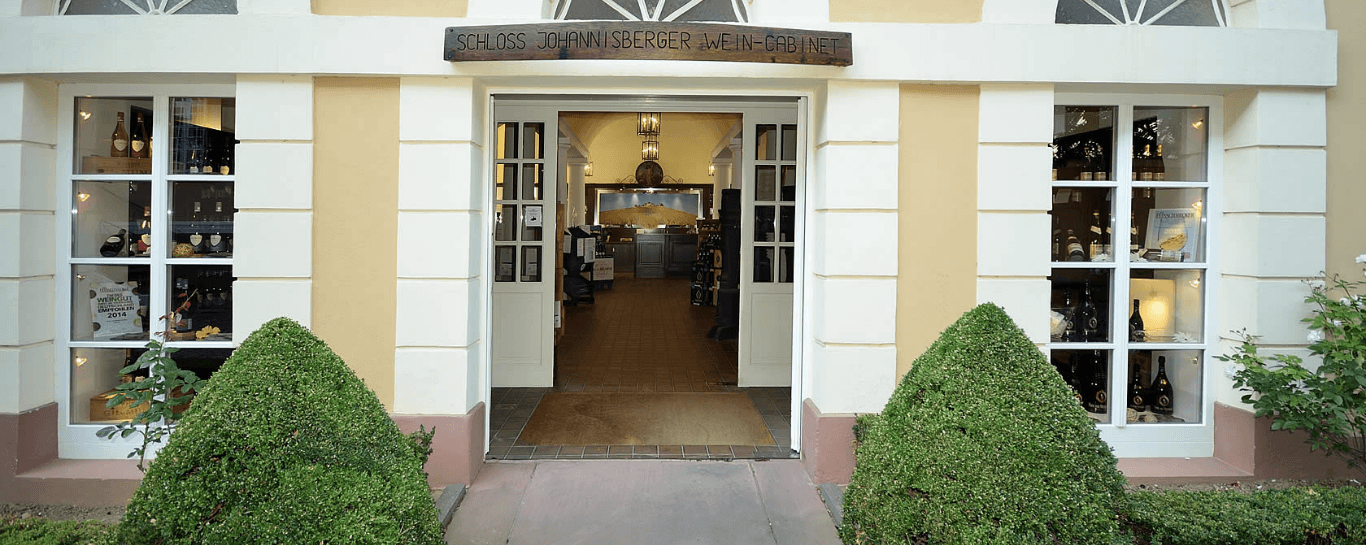They’ve been making wine at Schloss Johannisberg in Rheingau, Germany for the best part of 1,200 years and the first written record dates back the 9th century. Around 1100, Benedictine monks built a monastery on the site and parts of that structure survive in the current cellar. It’s where they keep the most precious wine today.
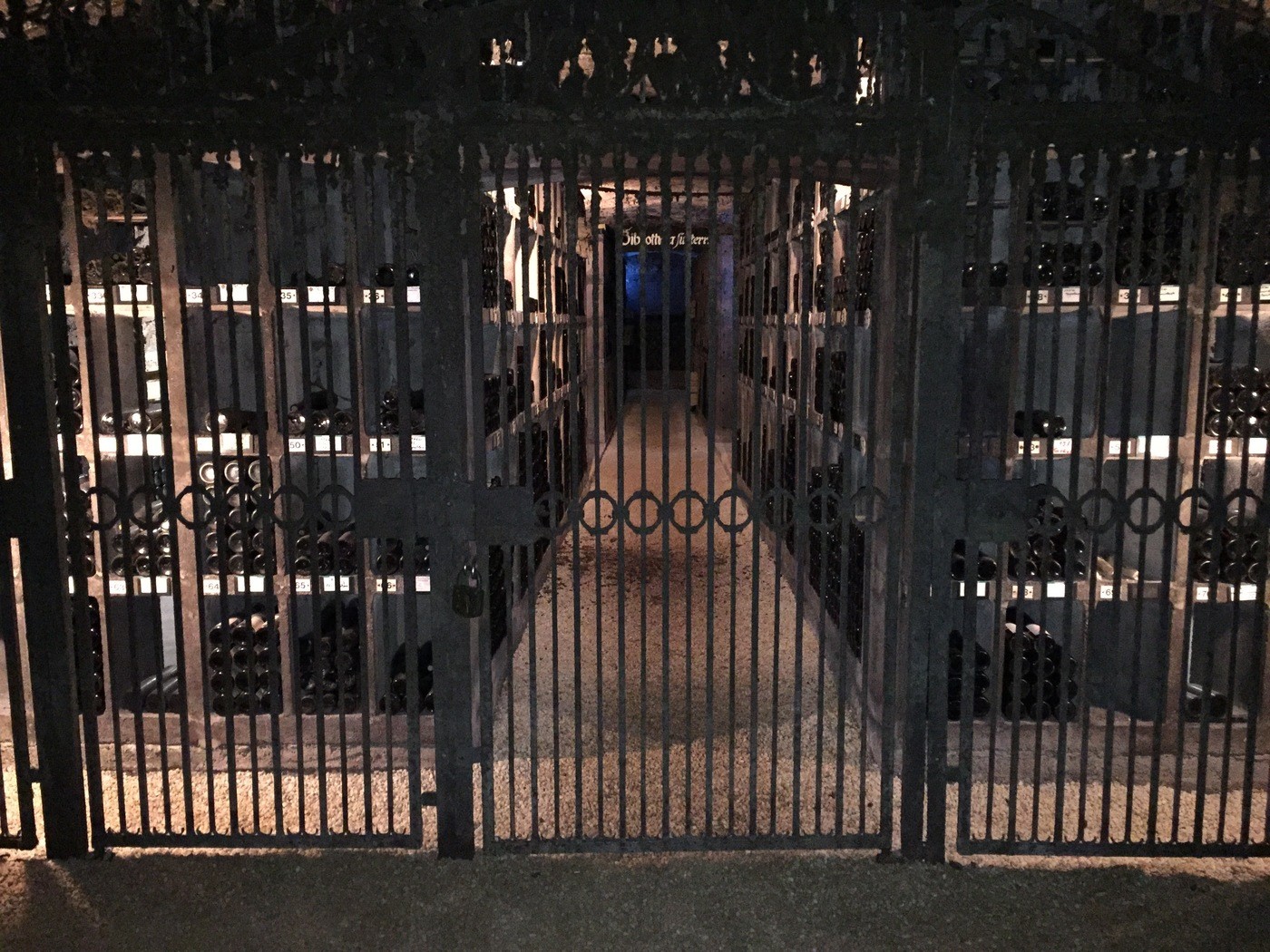
Visiting Schloss Johannisberg
First of all, to visit the cellars and have a wine tour of the Schloss Johannisberg, you need to come with a tour bus with at least 40 people. You can do wine tasting with a group of at least 10 people with three, five or seven wines.
However, if you just want to buy wine, you can go straight to their wine shop, called Vinothek, and do a little tasting there. Just be aware that the very expensive sweet wines are not available for tasting, as a half bottle of the best trockenbeerenauslese can be over 150€. A tasting sample would be a pricey 50ml!
Although we were a tour group of two, they were very kind and took us on a free tour, half an hour before a large group visit. Many thanks to Stefan Eiser who showed us the fabulous cellar and told us about the history of the place.
History – it’s just one glass after another
In 1716, the Abbey of Fulda under Prince Abbot Konstantin von Buttlar, bought the property and began construction of the palace on the site of the monastery. The planting with Riesling dates back to 1720.
The story goes that, in the past, all the grapes were picked on the same date, 16th of October regardless of how ripe they were. But one of the Fulda successors decided that he would chose the harvest date because he found the wine was too sour. So, a courier would bring him grapes to taste periodically and, once he was happy with their ripeness, the messenger would go back and the harvest would begin.

They picked the healthy remaining grapes but that wasn’t enough so the cellar master decided to pick the infected grapes too.
The result was a delicious sweet wine and the mould turned out to be botrytis cinerea, now known as ‘noble rot’.
After that, the vineyard deliberately harvested grapes later looking for the precious botrytized grapes. This is the beginning of the spätlese style of wine.
Enter Metternich
The castle again changed hands under Napoleon and then, after his downfall, the Austrian Emperor gave it to Metternich for his services at the Congress of Vienna in 1815.
But there was a catch. The deal was that one tenth of the annual harvest must be delivered to the House of Habsburg or its legal successors. The present owners, The Henkel group, still honour this agreement. It’s nice to know that feudalism is alive and well in modern Germany.
The British bombed the castle in 1942. The cellar survived but it took almost 20 years to rebuild the rest of the palace and church.
Wine making at Schloss Johannisberg
Schloss Johannisberg produces different wines every year, depending on vintage and ripeness of the grapes.
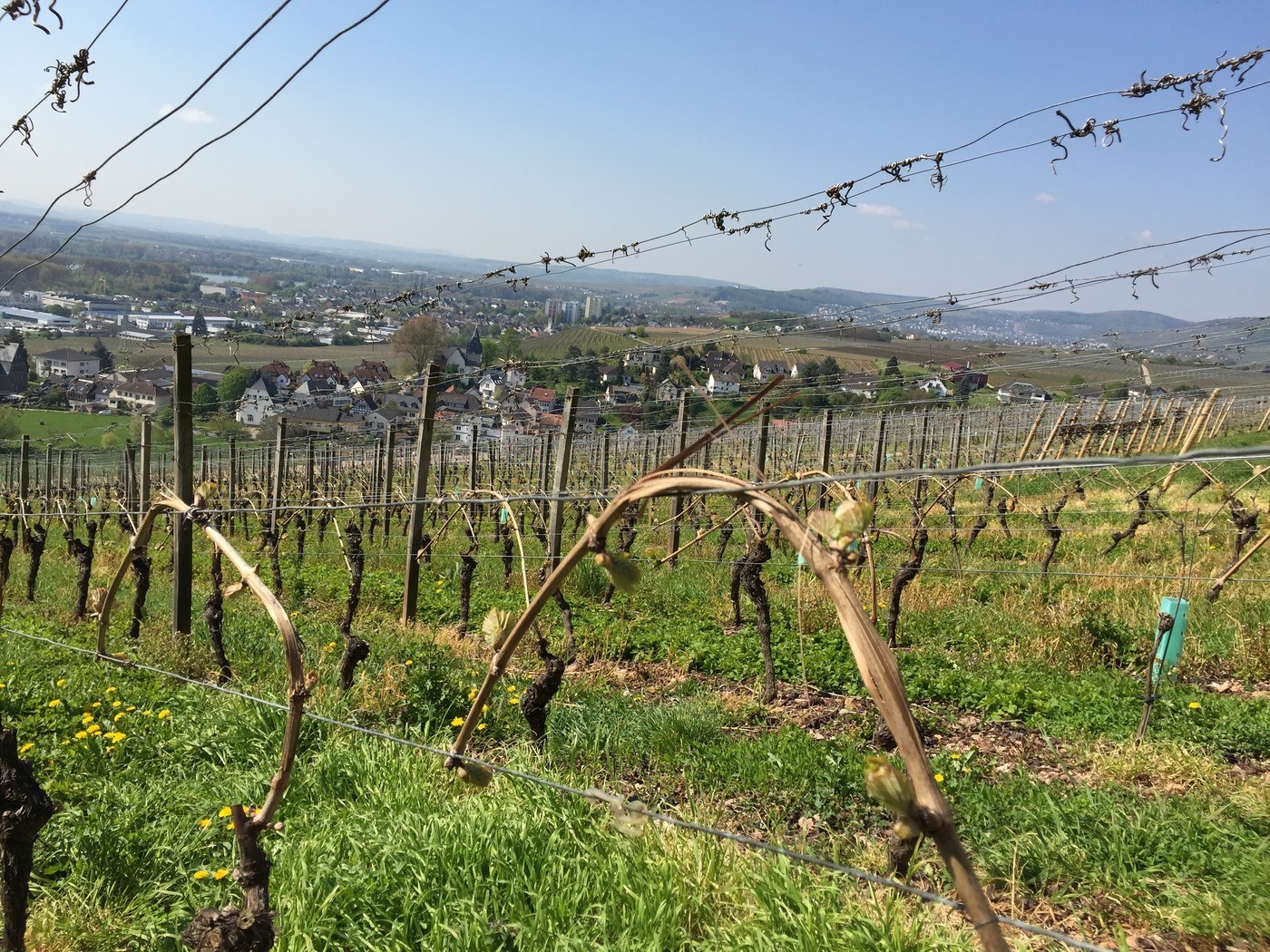
The juice is fermented in temperature-controlled stainless steel tanks and large oak casks. The best wines (late harvest and GG) are aged in old oak barrels for 8-9 months.
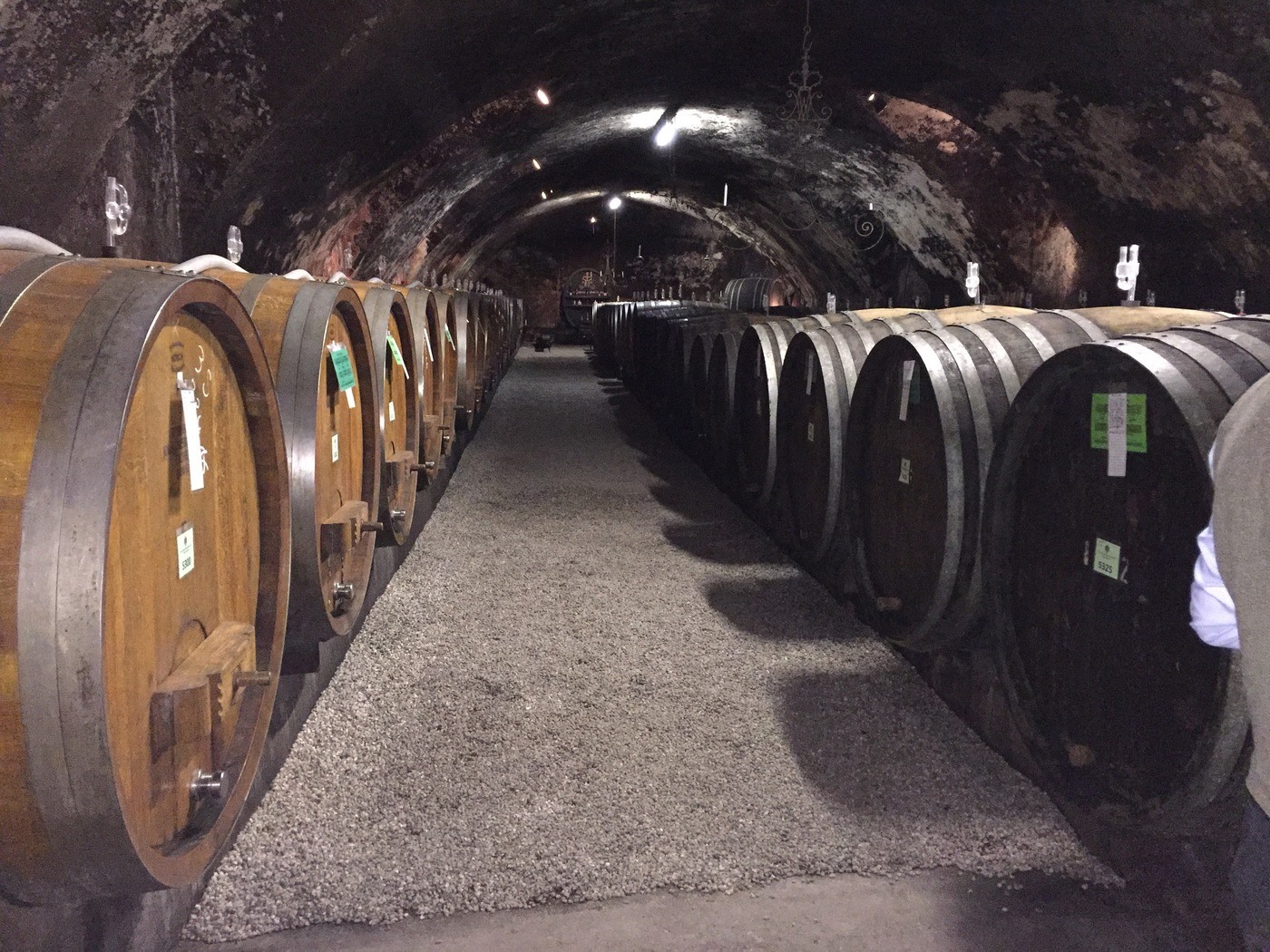
Style of wine varies from sparkling to still, dry and sweet.
Only a small proportion of sparkling wine is made via the traditional, Champagne method. The majority is made via tank method. (For more on this read our article: How sparkling wine gets its sparkle.)
They code their wine by colours to indicate quality and they’ve been doing that since the early nineteenth century. Back then they used coloured wax to seal the wine and today it’s done with coloured capsules (that’s the foil that wraps the cork and top of the bottle).
Schloss Johannisberg Riesling wine tastings
We tried four of their wines and wrote notes on two of them. Sorry. We got carried away and forgot to take notes!
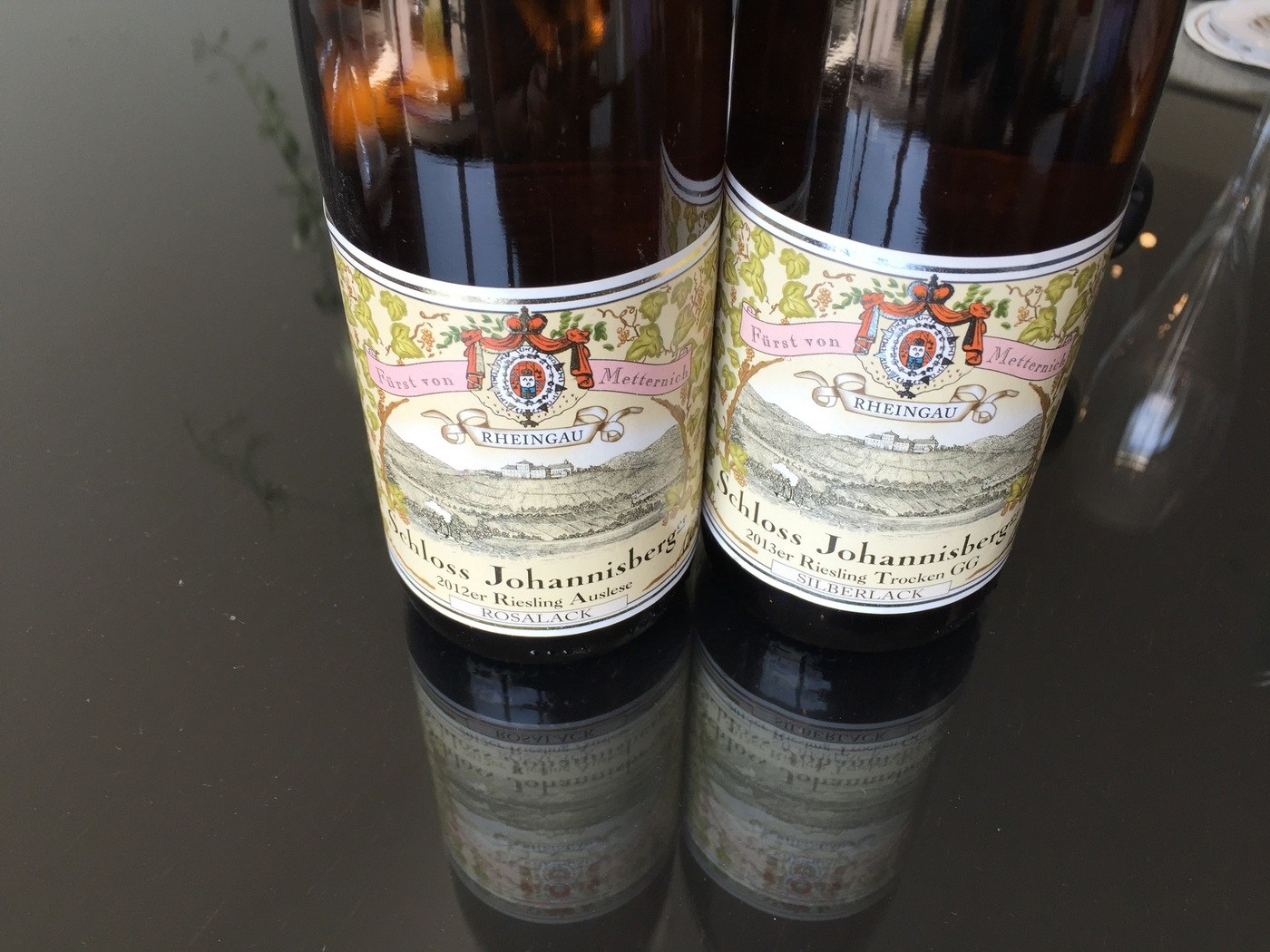
Schloss Johannisberger Riesling Trocken GG (Silberlack) 2013
Dry, medium lemon colour, pronounced aromas of lemon, peach, lychee, dried herbs and a honeyed finish, refreshing high acidity, with a full body and mouth coating oily sensation. Youthful, can drink now (personally I think it is a waste to drink now – defer your gratification if you can!), but definitely suitable for further ageing (at least 5-10 years).
Rating: outstanding, with more complexity still to come with ageing.
Schloss Johannisberger Riesling Auslese (Rosalack) 2012
Medium sweet, pale gold colour, pronounced aromas of dried apricot, hint of marmalade and vinyl from botrytis, honey and lemon. Delicate, with low alcohol (about 7% abv), full body and refreshing acidity and a long, pleasant finish. The wine is developing, as ageing aromas are just starting to show, but it will develop beautifully with age.
Rating: outstanding
A rich tradition of wine making
Yes, we’re definitely keeping an eye on this producer. They’ve done pretty well for the last 1,200 years. However, as Matthew (a historian by training) likes to explain, the last 1,200 years ‘have been quite exceptional.’
Joking aside, we loved their wine and brought back a half-case which we’ve buried deep and which we are trying to forget so that it has a few years to age properly. (And, updating this article six months later, we now sell two of their wines.)
We recommend that you buy a few of their best bottles and store them in your wine fridge or cellar for a rainy day in, say, 2023.
Even better, go visit them in person. Stay at the Burg Schwarzenstein hotel which is a 10-minute walk away. The money you’ll save buying at the vineyard gate compared to the ludicrous London prices will make the hotel bill seem less daunting.
Photo credit: the picture of the Vinothek is from Schloss Johannisberg. The other pictures are by Matthew and Mirela.

